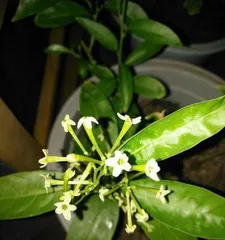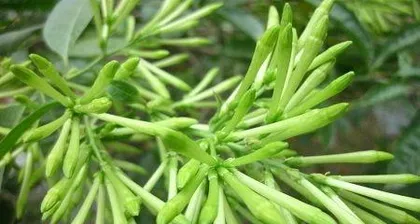Tuberose is a highly captivating flower, whose fragrance and beautiful blossoms have captured the attention of numerous flower enthusiasts. However, during the cold winter season, Tuberose requires more meticulous care to ensure its healthy growth and abundant flowering. This article will introduce some wonderful methods for winter care of Tuberose, helping fellow flower lovers to better care for this beautiful flower.

Correct Watering Method
In winter, the growth rate of Tuberose slows down, so the amount of watering needs to be reduced. Before each watering, touch the topsoil with your hand; water only if it is dry. At the same time, avoid watering in the evening to prevent waterlogging and root rot.
Controlling Temperature and Humidity
When placing Tuberose indoors, pay attention to controlling the indoor temperature and humidity, and do not expose it to extreme temperatures or humidity. Generally, Tuberose grows best at a temperature of around 15°C. If the ambient temperature is too high or too low, it will have a negative impact on the growth of Tuberose. Also, avoid exposing it to direct hot air or air conditioning drafts, as this can easily cause the leaves to dry out.

Maintain Ventilation
Tuberose needs the circulation of fresh air, so it is necessary to maintain indoor ventilation. However, in winter, the air is relatively dry, so avoid excessive wind that could damage the Tuberose. You can maintain ventilation by opening windows or doors.
Avoid Sudden Temperature Changes
In winter, the large temperature difference between indoors and outdoors can easily cause poor dormancy of Tuberose roots, leading to slow growth. To avoid excessive temperature differences, you can move the Tuberose to a more suitable environment for care.
Fertilization Method
Tuberose grows slowly in winter, so the fertilization interval can be extended to once every 30 days. However, fertilization should not be stopped completely. Organic and mineral fertilizers should be added in appropriate amounts to meet the nutrient needs of Tuberose.

Pruning and Placement
In winter, the flowers of Tuberose will wither, and the branches are also prone to becoming dry. Prune withered branches and flowers in a timely manner to maintain the healthy growth of Tuberose. At the same time, pay attention to the placement of Tuberose, avoiding direct sunlight or harsh weather like heavy rain that could affect it.
Pest and Disease Prevention
Tuberose is susceptible to fungal infections and pest infestations in winter. It is necessary to promptly remove and prevent pests and diseases to ensure the healthy growth of Tuberose.
Using Mulch
When planting Tuberose outdoors, you can use mulch to protect its roots from frost damage. You can also cover it with plastic film at night to maintain temperature and humidity.
Using Artificial Light Sources
When growing Tuberose indoors, artificial light sources can be used to ensure its normal growth and flowering. You can choose fluorescent lamps or LED lights rich in blue light.
Pay Attention to Repotting
During its growth period, Tuberose needs to continuously replenish nutrients, so it needs to be repotted in a timely manner. Generally, it is sufficient to change the potting soil for Tuberose once a year.
Do Not Use Cold Water for Watering
In winter, do not use cold water for watering, as this will lower the root temperature of Tuberose, thereby affecting its growth and flowering.
Avoid Dryness
In winter, indoor air can easily become dry, which is detrimental to the growth of Tuberose. You can use a humidifier or spray water to maintain indoor humidity.
Maintain Soil Aeration
Tuberose needs well-aerated soil to grow. You can add appropriate amounts of materials such as leaf mold and sand to the soil to enhance its aeration.
Ensuring Tuberose's Safe Wintering
When helping Tuberose overwinter, avoid the effects of sudden snow and ice storms. You can dig a trench of a certain depth around the Tuberose to protect its roots from frost damage.
Tuberose is a highly captivating flower. In the winter care work, attention to detail and following scientific methods are crucial to ensure its healthy growth and fragrant blooming. It is hoped that this article will be helpful to fellow flower enthusiasts.